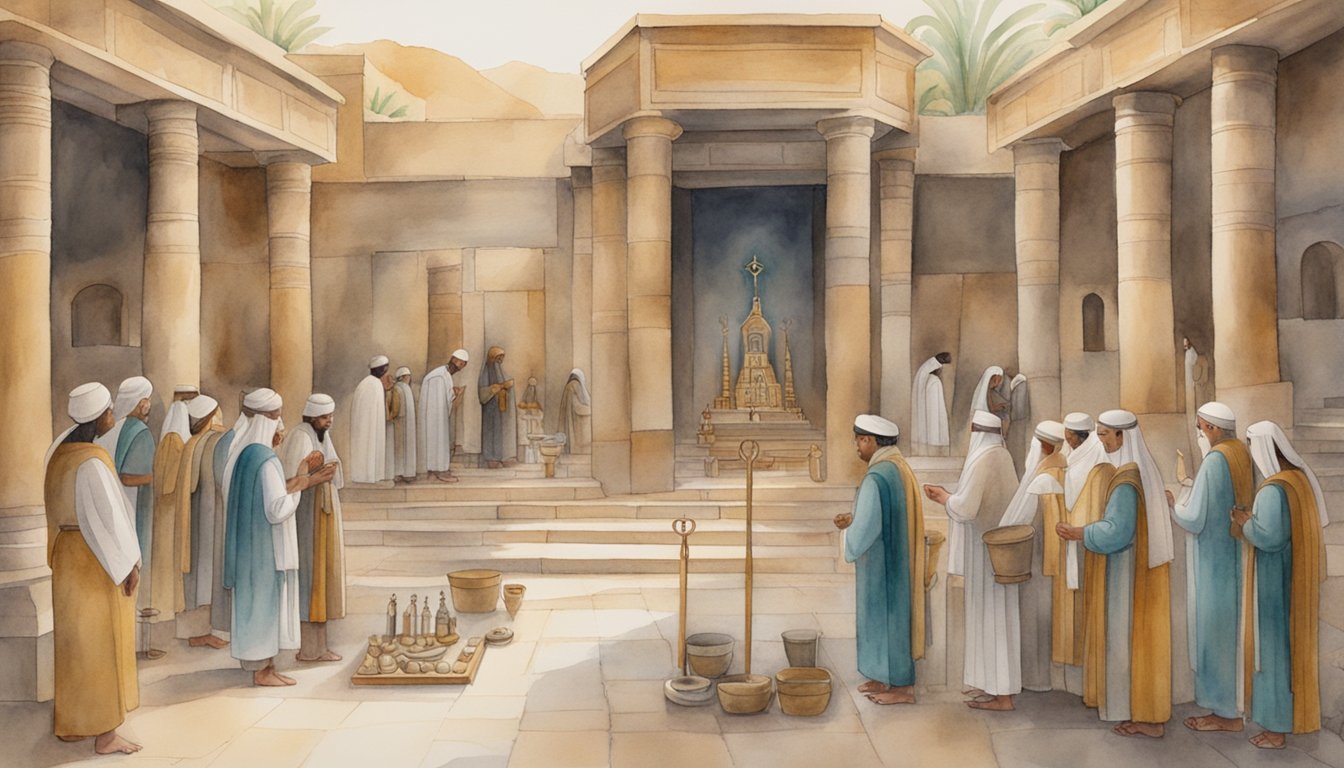Origins and Historical Context
Canaanite Ancestry and Descendants
The Canaanites are believed to be the descendants of Canaan, the grandson of Noah. Canaan was the son of Ham, who was one of Noah’s three sons mentioned in the Bible. According to Genesis 9:20-25, Canaan was cursed by Noah because of a sin that Ham committed against his father. The descendants of Canaan are said to have formed 11 groups, with some of them specifically referred to as Canaanites, while others encompass a broader range of people in the region of Syria and Palestine.
Influence of Neighboring Civilizations
The Canaanites were a Semitic-speaking cultural group that lived in the region of Canaan, which comprises present-day Lebanon, southern Syria, Israel, and Transjordan. They had notable influence throughout the Mediterranean during the second millennium B.C.E. Their civilization was heavily influenced by neighboring cultures, such as the Egyptians, Babylonians, and Hittites.
Biblical References to Canaanites
There are numerous mentions of the Canaanites in the Bible, often portraying them as a hostile, pre-Israelite indigenous population residing in the “promised land.” Before the arrival of the Israelites, the Canaanites were the inhabitants of Canaan, the land that was promised to Abraham. In the biblical narrative, the Israelite leader Joshua is said to have conquered the Canaanite territories and their cities after the Exodus from Egypt. The Canaanite people and culture had a significant impact on the Israelites, as they adapted their religion and practices to those of the Canaanites during their occupation of the land.
How Does the Story of David and Goliath Reflect the History of the Canaanites?
The david versus goliath narrative illustrates the struggle between the Israelites and the Canaanites. It symbolizes the underdog overcoming seemingly insurmountable odds, reflecting the historical tensions and battles in the region. This tale captures the essence of a society striving for identity amid conflict and challenges posed by powerful foes.
Cultural and Religious Aspects

Art and Material Culture
The Canaanites were known for their art and material culture, which was influenced by their interactions with neighboring civilizations, including the Egyptians and the Mesopotamians. They excelled in various forms of art, such as pottery, metalwork, and ivory carving. A key aspect of their material culture was the production of purple dye, which they gained from sea snails. This dye became a crucial factor in their trade and reputation as skilled merchants.
Canaanite Deities and Religious Practices
Canaanite religion was polytheistic, revolving around a pantheon of deities that included El, Baal, and Anath. These deities played significant roles in different aspects of life, such as fertility, agriculture, and weather. The Canaanites performed a variety of religious practices, including prayers, rituals, and sacrifices. These practices often involved the use of idols and iconography representing their gods.
Some notable examples of Canaanite religious practices include:
- Temple building and worship at designated sanctuaries
- The use of cultic objects like standing stones, altars, and sacred symbols
- Festivals, processions, and seasonal celebrations to honor their deities
Interactions with Israelites
The Canaanites’ religious influence on the Israelites is evident throughout the Old Testament. During their occupation of Canaan, the Israelites were often tempted towards idolatrous practices and worship of Canaanite gods. This struggle between monotheistic worship of Yahweh and the allure of Canaanite polytheism is a recurring theme in the Hebrew Bible.
Despite the religious conflicts, the Canaanites and Israelites shared several aspects of daily life, such as language, customs, and material culture. In fact, the Phoenicians, who were considered part of the Canaanite people, played a major role in the development of the alphabet used by the Israelites.
In summary, the Canaanites were a group of diverse tribes with a rich cultural and religious heritage that not only influenced neighboring civilizations but also left a lasting impact on the development of the biblical narrative and ancient history.

